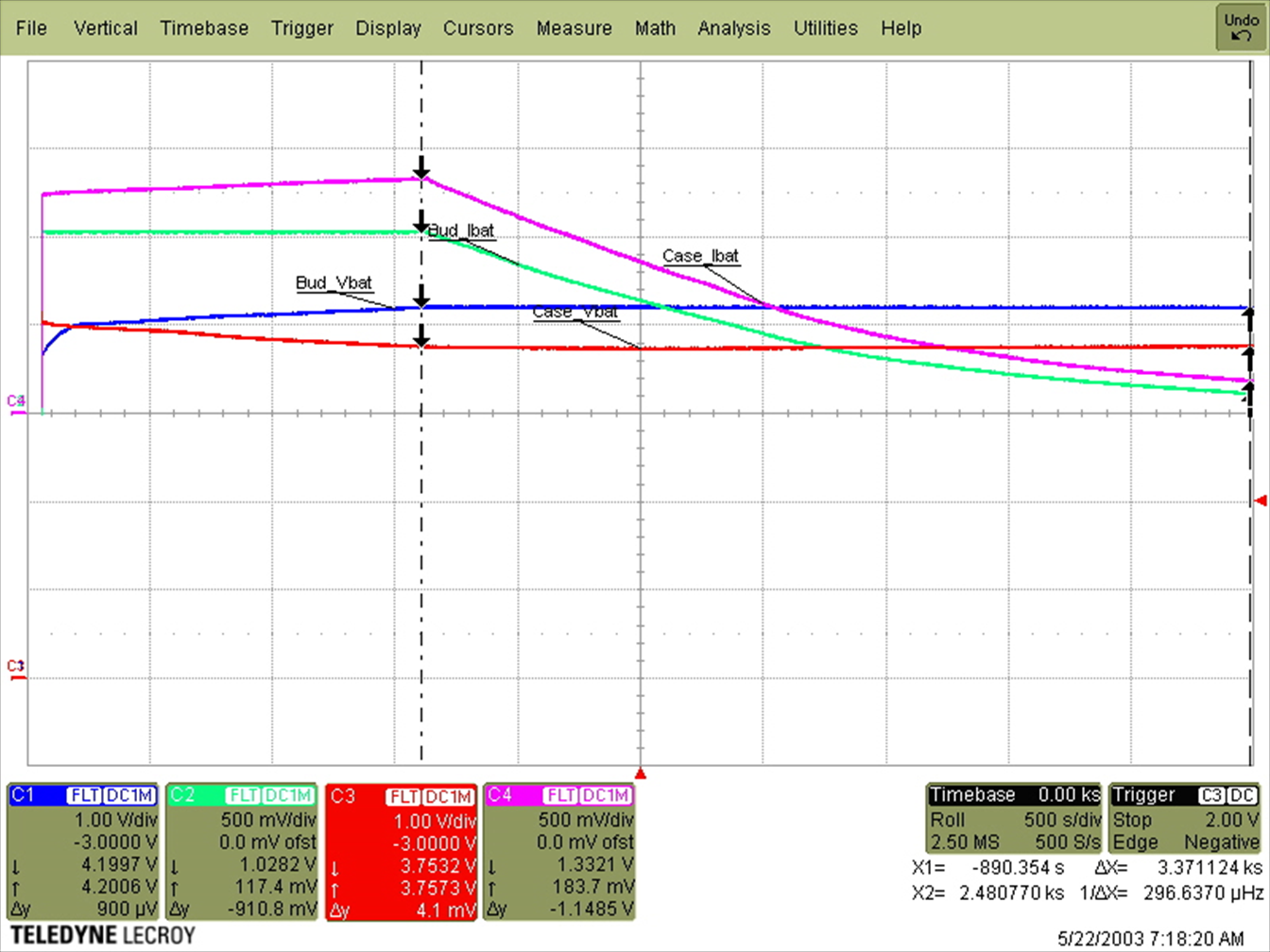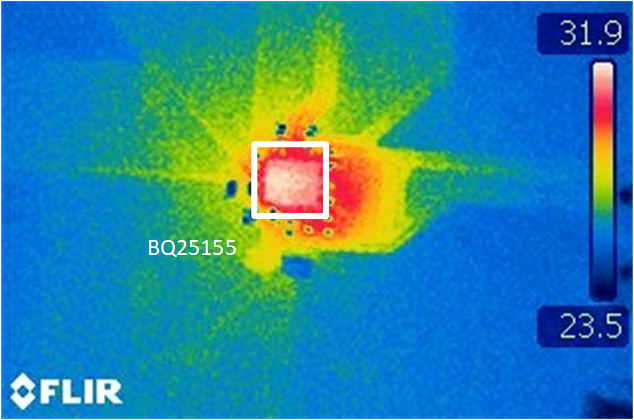SLUAA04A june 2020 – may 2023 BQ25150 , BQ25155 , BQ25618 , BQ25619 , TS5A12301E , TS5A3157 , TS5A3159A , TS5A6542
6.2 BQ25619 with 4.6-V Output
The second system shown uses the boost converter of the BQ25619 with an output of 4.6 V. This solution has a higher efficiency than a system with a 5-V intermediate but still struggles with thermal performance.
 Figure 6-3 Charge Cycle of the BQ25619 with 4.6-V Output Design
Figure 6-3 Charge Cycle of the BQ25619 with 4.6-V Output Design Figure 6-4 Thermal Performance of the BQ25619 with 4.6-V Output Design
Figure 6-4 Thermal Performance of the BQ25619 with 4.6-V Output Design